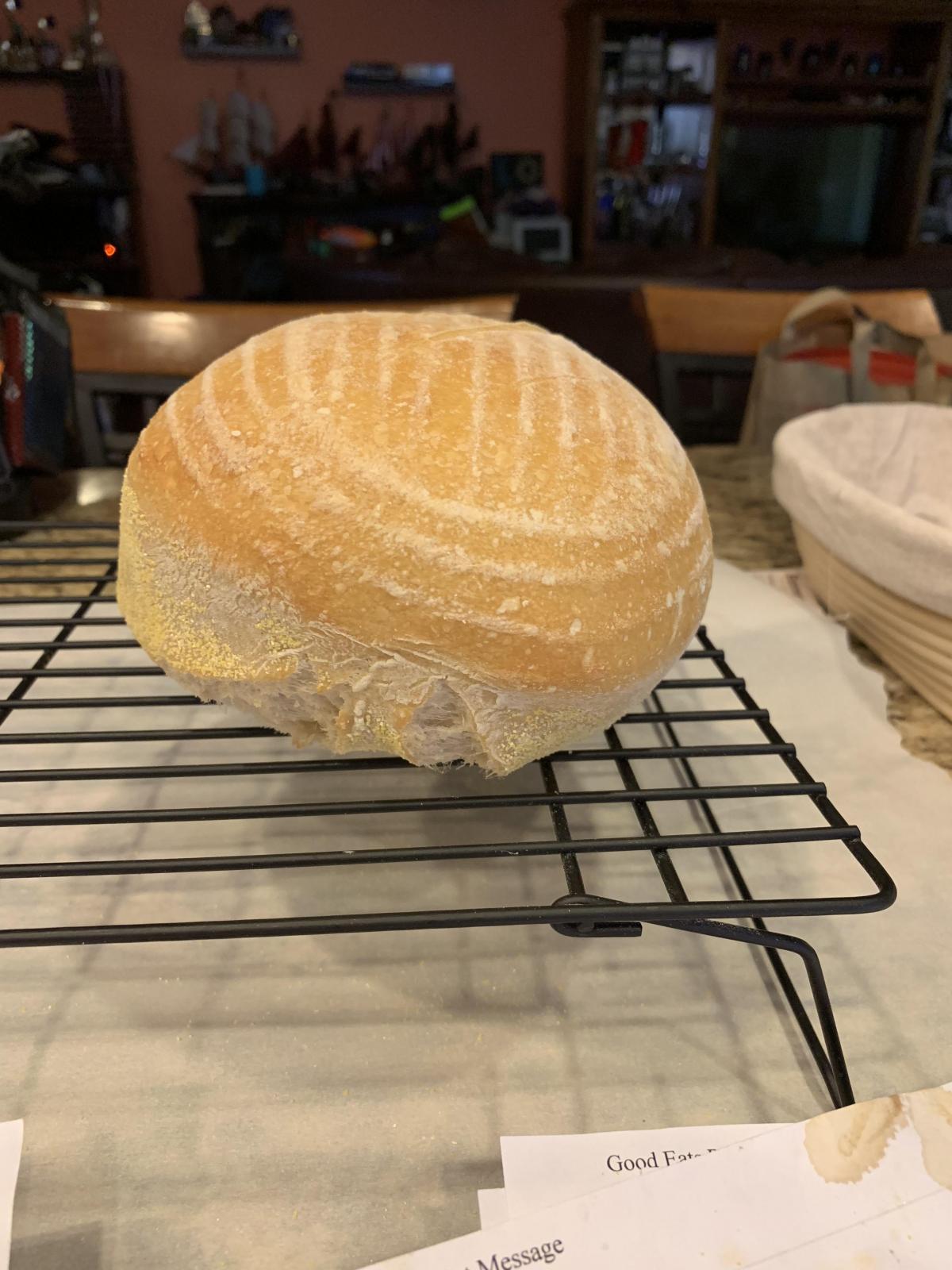
Bread rising unevenly

Hello, I am hoping you can help me with a question. My loaves had been very consistent for a while, good flavor and rising pretty evenly. Unfortunately, for the last few bakes, some of my loaves have been rising unevenly. It seems to happen with the oval loaves mostly. Am I not shaping it correctly? Or is there some other issue I am not aware of?
I use King arthur bread flour.
800 g of flour, 19 g of salt, 460 g of warm water, 320 grams of unfed sourdough starter
I mix, knead, then let rise 3 hours, knock it back and shape 2 loaves. Stays overnight in the fridge, then baked at 425 for about 30 minutes.
Thank you in advance for your help! When I posted earlier with some questions and adjusted the salt per the recommendations from posters on this site (I used to use only 10 grams of salt, but increased to 19 per recommendation), the bread came out so much better overall.


Not enough steam. The bread has formed a crust too early so the dough has nowhere to expand and the escaping steam takes the weakest route. And perhaps it's a tad under proofed.
Getting enough steam in the oven or baking in a Dutch Oven (or equivalent) will help. This will also help your scoring to open up and not close back up. Getting the perfect timing for final proofing will also control runaway oven spring.
I would say this could use better shaping and better slashing. It looks like maybe you have a small slash on the top. But the principal reason for them is to give the bread a place to go instead of another weak area in the dough.
I lean toward the second comment, but also agree with the first.
What really strikes me is that you have an upside down Forkish loaf. What I mean by that is he puts his dough into bannetons with the seam down. He then bakes with the seam up, and the cracks form wherever the weak points are (generally the seam). If you flip your loaf over, does it look like one of his?
Since the problem has manifested “over the last few bakes”, that suggests something has changed.
If you live in Chicago (based on your account name), my first guess is that the temperature in your kitchen has gotten cooler over the past several weeks. Lower temperatures = slower yeast growth. Slower yeast growth = longer fermentation times. If kitchen temperatures are cooler, and if you have stuck to the 3-hour bulk ferment that was used in warmer temperatures, then the dough is going into the oven with less proofing than it had previously. That would lead to excessive expansion while baking.
Do you allow any bench time for the shaped loaves before putting them in the refrigerator? My starter just about shuts down in the fridge, so I know a loaf of mine would not ferment enough if it was refrigerated immediately after shaping.
Thanks for all your suggestions! Actually I live in Arizona but with the cooler weather’s house is definitely been much cooler than normally. I’ll try leaving it out Longer after forming the loaf, I also like the idea of a better/in the top. I still get a little timid with Slashing the top of the love. I’m scared I’ll go too deep.
Early crust made the steam escape through the seam. you need to generate more steam.
Regarding scoring make sure you are using sharp blade and cut 1 cm deep. Don't be afraid to go deep.
.
Thank you, I will try to make my scores deeper! I tried another few loafs integrating everyone’s suggestions and they have come out better happily!!
Would the idea of steam or not enough proofing apply to gluten-free bread, too? I cut the top diagonally with 3-4 slices. But it has been lifting on one side as it bakes. I never used to have this problem, but it has become a common occurrence.